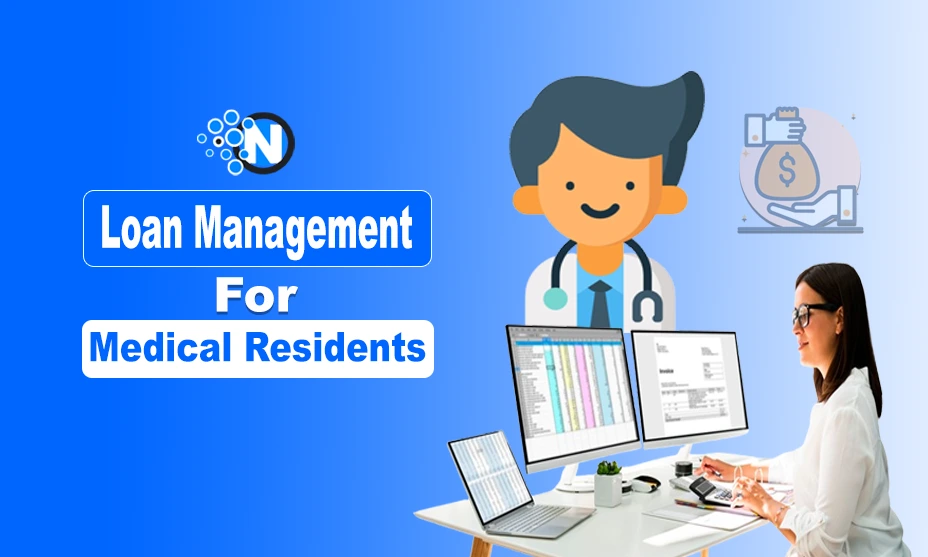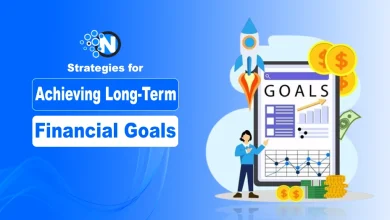Smart Loan Management for Medical Residents – Some Best Options

Medical residency could be a stressful part of your training to become a doctor. It usually requires many hours of a day, concentration and dedication to improvement of existing skills. But even while you are learning so much about medicine, there is one thing that most people do not teach you: how to manage student loans.
That is why, like the responsibilities of residency, the repayment of the medical resident’s loan might seem daunting. However, with the right strategies, you can reduce this burden and set yourself up for financial success.
In this blog post, I have mentioned some smart loan management tips for medical residents so they can manage their finances in the best way.
Why Loan Management Matters for Medical Residents
Medical residents often face a unique financial challenge. While the income you earn during residency is modest, the student loans accumulated during medical school are significant. According to the Association of American Medical Colleges, the average debt for medical students exceeds $200,000.

Ignoring these loans during residency can lead to unnecessary stress. The interest continues to grow, increasing the overall amount you owe. Financial mismanagement at this stage can make it harder to achieve financial goals like buying a home or saving for retirement later in life.
However, loan management does not only equal numbers but it also comes with emotions. Bad debts may be stressful to deal with, and can distract you particularly during this phase of your career. The central sentiment behind consolidation is not only the cost saving but also the freedom it gives, to be able to focus on your training fully.
Loan Management Strategies
Managing loans during residency doesn’t have to be daunting. With careful planning, you can stay on top of your debt while still making room for other priorities.
1. Budgeting Effectively
Residency comes with a limited income, so budgeting is essential. Start by listing your necessary expenses, such as rent, utilities, and transportation. Then, allocate a portion of your income for loan payments. Free budgeting tools and apps can help you track your spending and ensure you’re living within your means.
2. Income-Driven Repayment Plans
Federal student loans offer income-driven repayment (IDR) plans that cap your monthly payment based on your income and family size. These plans are ideal for medical residents, as they reduce the financial stress during this lower-earning phase. Options like Pay As You Earn (PAYE) and Revised Pay As You Earn (REPAYE) also include interest subsidies, reducing the total amount you’ll owe over time.
3. Deferment and Forbearance
If making payments feels impossible, deferment or forbearance may seem like a good option. These programs allow you to temporarily pause payments. However, keep in mind that interest continues to accrue during this period for most loans, increasing your overall debt. Use these options only if absolutely necessary.
Best Loan Repayment Options
Beyond budgeting and repayment plans, there are other avenues you can explore to better manage your loans during residency.
1. Public Service Loan Forgiveness (PSLF)
If you plan to work in a qualifying non-profit or government healthcare facility, PSLF could be an excellent option. Under this program, you make 120 qualifying monthly payments while working in a public service role. Afterward, your remaining loan balance is forgiven.
While the process takes time, starting PSLF during residency allows you to count those years toward the payment requirement, reducing the total time needed to achieve forgiveness.
2. Refinancing Your Loans
Another strategy is loan refinancing. This process involves coming up with a new loan and paying off the existing loan at a lower interest rate which can mean the difference of thousands of car loan. This work specifically helps private loans, which again are not as flexible as federal loans with the repayment plan.
For instance, if you have fixed high interest rates on your private loans, the possibility of getting improved medical resident refinancing becomes important to relieve such rates. An important thing to remember is that any federal loans refinance to private ones and, thus, the PSLF program may no longer be available to you. As such, there must be a proper analysis of the strengths and weaknesses so as to make an informed decision.
3. Employer Loan Repayment Programs
A few healthcare employers offer student loan repayment as one of their benefits. These programs could help you pay your debt to a minimal level and still get a reward for your efforts. This option should also be studied carefully when searching for a job after the completion of residency.
Practical Tips for Success
Effective management of loans requires information and organization. Start with as many details as you can about your loans: the interest rates, the due dates and the available options to repay. The best way is to stay informed with the dates and contact your loan servicer time to time so that you are not surprised.
Additionally, take advantage of resources available to medical residents. Many organizations offer free financial counseling or workshops tailored to your needs. By staying proactive, you can ensure that your loans don’t hinder your career or personal goals.
Conclusion
While managing student loans during medical residency might not be easy, it is all on the right track towards achieving financial sustainability. Being financially savvy, examining all the opportunities for repayment such as, the graduated payment plan, refinancing, or PSLF, you will never be caught off guard.
It is important to know that today’s decision made could affect the outcome of your tomorrow. Though residency can take a lot of your time thereby limiting the amount of time you devote to your finances, it does not have to strain you financially. Taking charge today ensures a brighter, more secure tomorrow.



